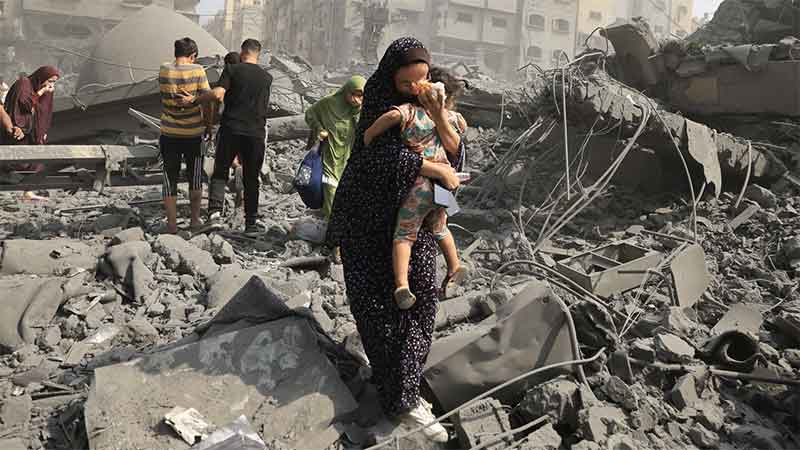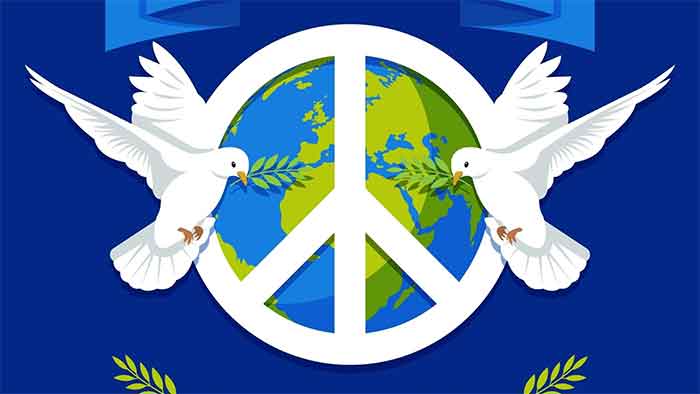
Many eminent persons, individually and in groups, have been trying to convince the world leadership to give much more attention to environment protection, particularly to checking climate change. This is very well justified by the seriousness of the environmental crisis. While fully supporting this, it must be asserted that peace and disarmament are even more important.
One compelling reason is that the kind of extreme weather conditions climate change threatens to unleash over the next few decades (a less extreme yet already frightening version is already being experienced at many places) can be unleashed within just a few days if less than 5% of the existing stocks of nuclear weapons are actually used. Their destructive impact is often discussed in terms of fires, explosions and heat, but the nuclear winter these can herald resulting in denial of sunshine and famines are no less destructive.
While it is commendable that humankind has avoided actual use of nuclear weapons since 1945 and their numbers now, around 13,000, are less than one-third of the peak numbers, these achievements are more or less nullified by other factors, the most prominent being that actual use of around 5% of the existing stocks is still adequate to more or less destroy most life on our planet. With decreasing response time, increasing risk of accidental use, increasing tensions and conflict situations among the nine nuclear weapon powers, increasing chances of proliferation and increasing possibilities of terrorists possessing/gaining control over nuclear weapons ( particularly cruder and smaller versions), the actual risks may now be even higher than when in sheer numbers nuclear weapon stocks were at their highest.
In addition, despite the ban on chemical and biological weapons, high risks of accidental as well as intentional serious harm from them ( or research relating to them) still exist. Robot weapons can pose new kinds of risks and even get out of hand, living out the worst nightmares of science fiction in reality. Space warfare remains a very serious risk of our future.
Conventional weapons continue to be packed with more and more destructive power and saturation bombing in a densely populated city can claim more lives than the nuking of Hiroshima.
Wars and civil strife continue to kill and disable a large number of people, immediately and directly of course but in addition also due to longer-term and indirect impacts. Increasingly civilians are more and more at risk, with a heavy burden imposed on children and women.
A very large number of animals and birds killed in very painful ways are not even mentioned generally as a cost of war, nor is the almost permanent destruction of their habitats.
A very large number of people are being displaced, internally and externally, often for very long periods, by war and civil strife.
World military expenditure is already estimated at 2113 billion dollars, but this is only the official estimate. A lot of military expenditure is hidden under civilian projects mainly linked to military pursuits, or else goes unrecorded.
Wars as well as war preparations including weapons production and transfer, tests, drills and accidents leave a very heavy carbon footprint, apart from causing other serious environmental harm. If possibilities of war are very significantly diminished, leading also to big reduction of weapons worldwide, this by itself can significantly reduce greenhouse gas emissions, apart from contributing much to climate change adaptation as well.
Wars and civil strife, including their long-lingering side effects, are already the leading cause of human distress in many parts of the world. While the vanquished suffer the most harm of course, there is increased evidence that the attacking soldiers frequently also suffer long-term serious harm, including depression and suicide.
Violent crime has become an enormous source of actually experienced distress as well as fear. In daily life the proliferation of firearms has greatly increased the risk of serious injury and death from violence. Homicide and suicide victims claimed by guns in a typical year can be much higher than the victims claimed by war.
Hence clearly there is a very strong case that peace and accompanying reduction of all weapons can contribute more than anything else to reducing distress , to checking environmental ruin and above all to protecting the basic life nurturing conditions of our planet.
Both are closely related—without widespread conditions for peace weapons cannot be reduced significantly and if there is proliferation of destructive weapons then peace becomes most difficult to achieve.
Hence peace and reduction of all weapons must become the top priority of humanity without further delay. This change is needed not just at the level of world leadership, but in addition must be seen in very thoughtful, creative and large-scale initiatives in all walks of life, at the level of schools and colleges, at the level of families and communities, in spiritual organizations and in various media and entertainment sources, all over the world.
Bharat Dogra is Honorary Convener, Campaign to Save Earth Now. His recent books include A Day in 2071, Planet in Peril and Protecting Earth for Children.

















































